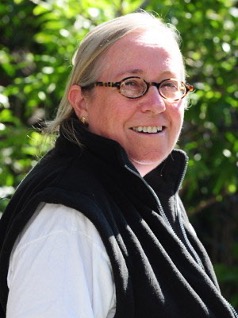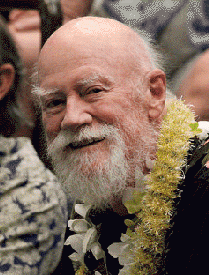Aloha and welcome to the Department of Cell and Molecular Biology (CMB) website, which we hope you will see as a gateway to what our department has to offer in research, education and services.
The mission of the Department of CMB at the John A. Burns School of Medicine (JABSOM) is to achieve excellence in research, education and service programs. The department's wide-ranging research programs include basic science disciplines in molecular and cell biology, genetics, biochemistry as well as developmental biology, cancer biology, neurobiology, diabetes, cardiovascular biology and immunology. Our research is primarily supported by NIH, DoD and other local or national foundations. Several of our faculty and affiliates are members of other JABSOM departments and centers as well as the UH Cancer Center.
The CMB department houses the CMB Graduate Program (Master's and Ph.D.), the Imaging as well as the Histology Core Facilities, and provides support to multiple NIH institutional infrastructure grants, including Ola HAWAIʻI, Diabetes COBRE and INBRE.
Read some highlights of the research in our department have been published in The Hawaiʻi Journal of Medicine and Public Health.
Follow this link: Department of Cell & Molecular Biology Research Highlights.
![]() CMB GRADUATE PROGRAM
CMB GRADUATE PROGRAM
The Cell and Molecular Biology Graduate Program in Biomedical Sciences provides an integrated course of study for students seeking a PhD or MS degree in health-related research.
Graduate Program Chair:
Dr. Michelle Tallquist
Email: michelle.tallquist@hawaii.edu
Tel: (808) 692-1579
Graduate Program Administrator:
Whitney Thordarson
Email: thordars@hawaii.edu
Tel: (808) 692-1514
Our department has historically been driven by the inseparable tandem of biomedical research and graduate/medical education.
Our students, Faculty, Staff, Alumni and their Successes:
The Department of Genetics was one of the original basic science departments forming the John A. Burns School of Medicine at the University of Hawaiʻi when it became a degree granting institution in 1973 (read more on this here). In its formative years, the Medical School adhered to a traditional format of intensive basic science education in the first two years, and the faculty in the department provided courses in genetics to both medical students and graduate students working towards MS and/or PhD degrees. Our original department also maintained a strong research focus on quantitative, evolutionary and molecular genetics. Over time, as the scope of the science of genetics changed, the department first changed its name to the Department of Genetics and Molecular Biology to reflect the broadened focus of the field. Still later, the department changed its name again to become the Department of Cell and Molecular Biology as it is known today.
The department is now composed of 12 faculty members and about 25 graduate students at any given time, and our wonderfully dedicated administrator, Tracie Murakami. Our latest recruit is Kate Schunke.
The future is guided by the past and we stand on the shoulders of those who came before us.
 Dr. Cann – who has retired in 2017 – is a geneticist who made a ground-breaking scientific discovery on the variation and evolution of human mitochondrial DNA that is now referred to as Mitochondrial Eve. Using mtDNA isolated from 147 women from five geographically distinct populations (Africa, Asia, Australia, Europe and New Guinea), Dr. Cann and her colleagues remarkably established that all living humans are genetically descended from a single African mother who lived ~200,000 years ago and who is referred to as the Mitochondria Eve. This implies that all modern humans have progressively spread across the globe from Africa. This seminal work became the foundation of the “Out of Africa” theory.
Dr. Cann – who has retired in 2017 – is a geneticist who made a ground-breaking scientific discovery on the variation and evolution of human mitochondrial DNA that is now referred to as Mitochondrial Eve. Using mtDNA isolated from 147 women from five geographically distinct populations (Africa, Asia, Australia, Europe and New Guinea), Dr. Cann and her colleagues remarkably established that all living humans are genetically descended from a single African mother who lived ~200,000 years ago and who is referred to as the Mitochondria Eve. This implies that all modern humans have progressively spread across the globe from Africa. This seminal work became the foundation of the “Out of Africa” theory.
Dr. Cann continued her career as a faculty in the department teaching undergraduate and graduate students, with services at the medical school, expanding her work on human evolution and later took an interest in the genetics of the Hawaiian birds. Dr. Cann hired me and helped kick-start my work as a faculty in the department. I still admire her exemplary work.
 After completing his PhD at Cambridge University (UK) and his postdoctoral studies at the California Institute of Technology, Rayner was recruited to join the University of Hawaiʻi (UH) medical school by JABSOM’s first dean, Dr. Terence Rogers and so was one of JABSOM’s founding faculty members and an early champion of the school. Indeed, Rayner was hired on September 4, 1964 before the medical school had even been officially founded by State of Hawaiʻi legislation in 1965.
After completing his PhD at Cambridge University (UK) and his postdoctoral studies at the California Institute of Technology, Rayner was recruited to join the University of Hawaiʻi (UH) medical school by JABSOM’s first dean, Dr. Terence Rogers and so was one of JABSOM’s founding faculty members and an early champion of the school. Indeed, Rayner was hired on September 4, 1964 before the medical school had even been officially founded by State of Hawaiʻi legislation in 1965.
In a career that spanned more than 50 years, (he retired in late 2014), Dr. Rayner left behind a string legacy both at JABSOM but also at the Pacific Biosciences Research Center as an inspiring scientist, an educator to both undergraduate and graduate students, a mentor to many (including myself) and as an administrator. In addition to being an early proponent of problem-based learning (PBL), he also taught it to medical students. Dr. Rayner held a myriad of leadership and committee membership positions, but he is particularly remembered in our department as having spearheaded the development of Neurosciences at JABSOM with NIH-funded programs, the recruitment of many faculty and the CMB Graduate Program Neurosciences Specialization.
Sadly, Dr. Rayner passed away in 2022.